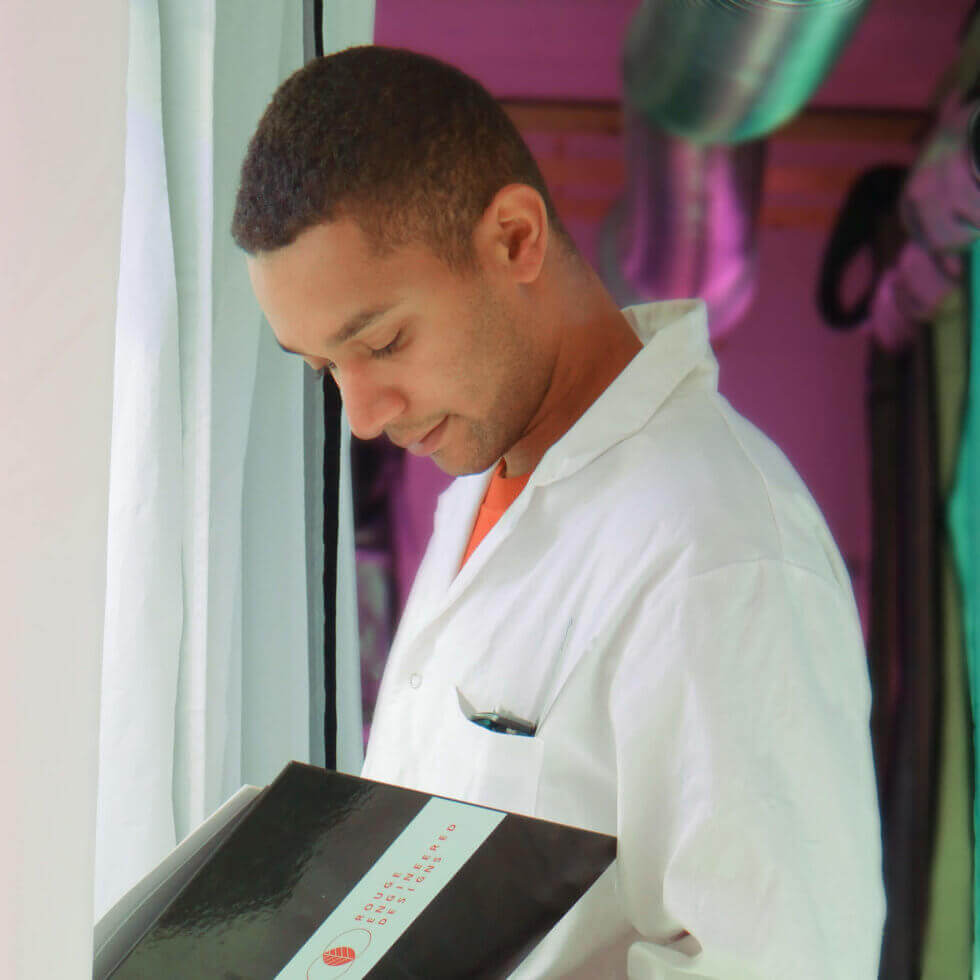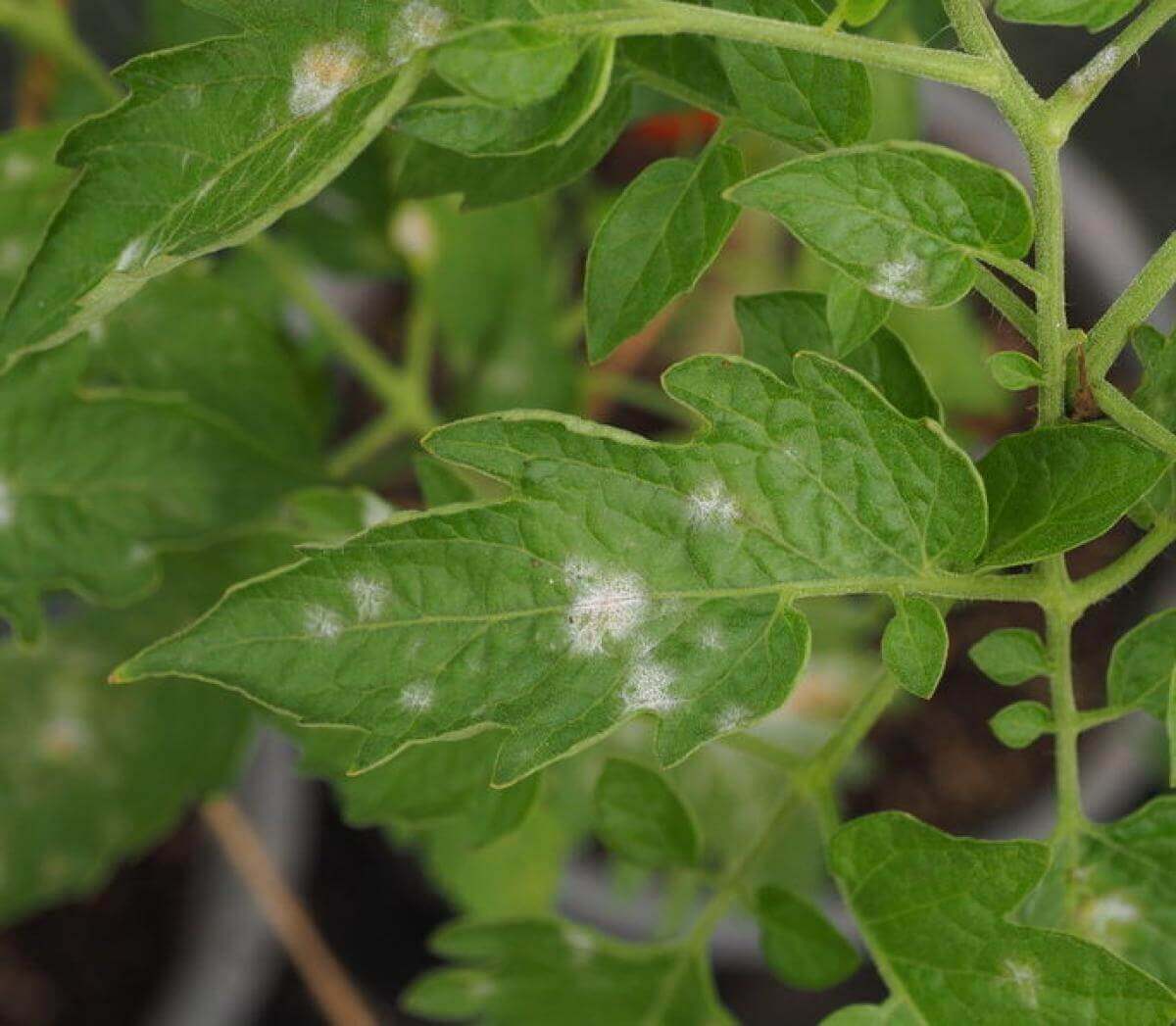
Light management, an alternative method of combating fungi.
In France, the Ecophyto plan aims to reduce the use of phytosanitary products by 50% by 2025. To achieve this goal and reduce the environmental impact of our horticulture, alternative solutions need to be put in place.
14 November 2023
Two different modes of action.
Among the alternative control tools studied, optimized light management is a promising one. In addition to its remarkable effects on plant development and quality, light can have an impact on other organisms present in a greenhouse. Fungus infestation can be controlled in two ways: directly by inhibiting the micro-organism’s development and indirectly by stimulating the plant’s natural defenses.
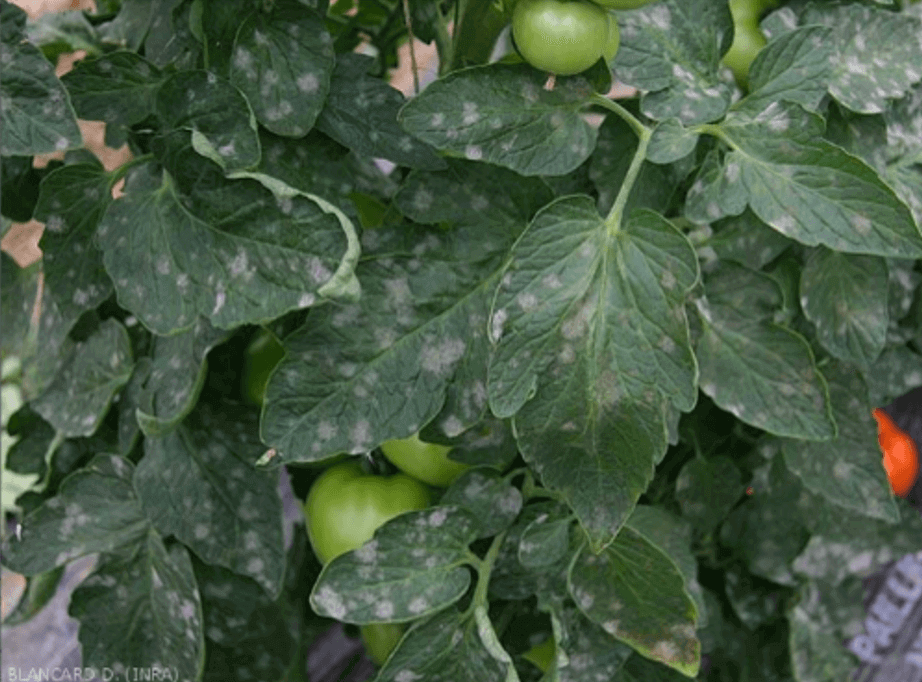
Figure 1: Powdery mildew (Pseudoidium neolycopersici) symptoms on tomato Source: Blancard, 2018.
Direct action against fungi.
There are many ways in which light can inhibit the development of fungi. For example, the use of an appropriate ratio of red to far-red (R/FR) light inhibits their growth, by inhibiting the development of haustoria , organs linked to nutrition. In addition, the use of part of the ultra-violet radiation, UV-B, also reduces fungal growth, by inhibiting the development of the mycelium. This also slows down the initiation of spore germination. In other cases, the application of a ratio of red and blue light inhibits sporulation, preventing their spread throughout the crop. Finally, certain UV rays can alter the DNA of fungi, reducing their development capacity.
Indirect action via plant defenses.
Light also has an effect on the plant, stimulating its defense system. During light stress, plants produce molecules known as Reactive Oxygen Species (ROS), which are responsible for setting up the plant’s defense system. However, these molecules have a negative impact on plant development. Red light reduces the concentration of ROS in a plant while maintaining a rapid alarm signal. Several wavelengths such as UV-C, through the production of ROS, stimulate the accumulation of secondary metabolites, molecules involved in the plant’s defense system. In addition, certain R/FR ratios, through their effect on plant’s biomass, make it difficult for a fungus to colonize a crop. In this way, it is possible to increase the thickness of plant leaves and prevent the pathogen from developing by denying it access to its food source.
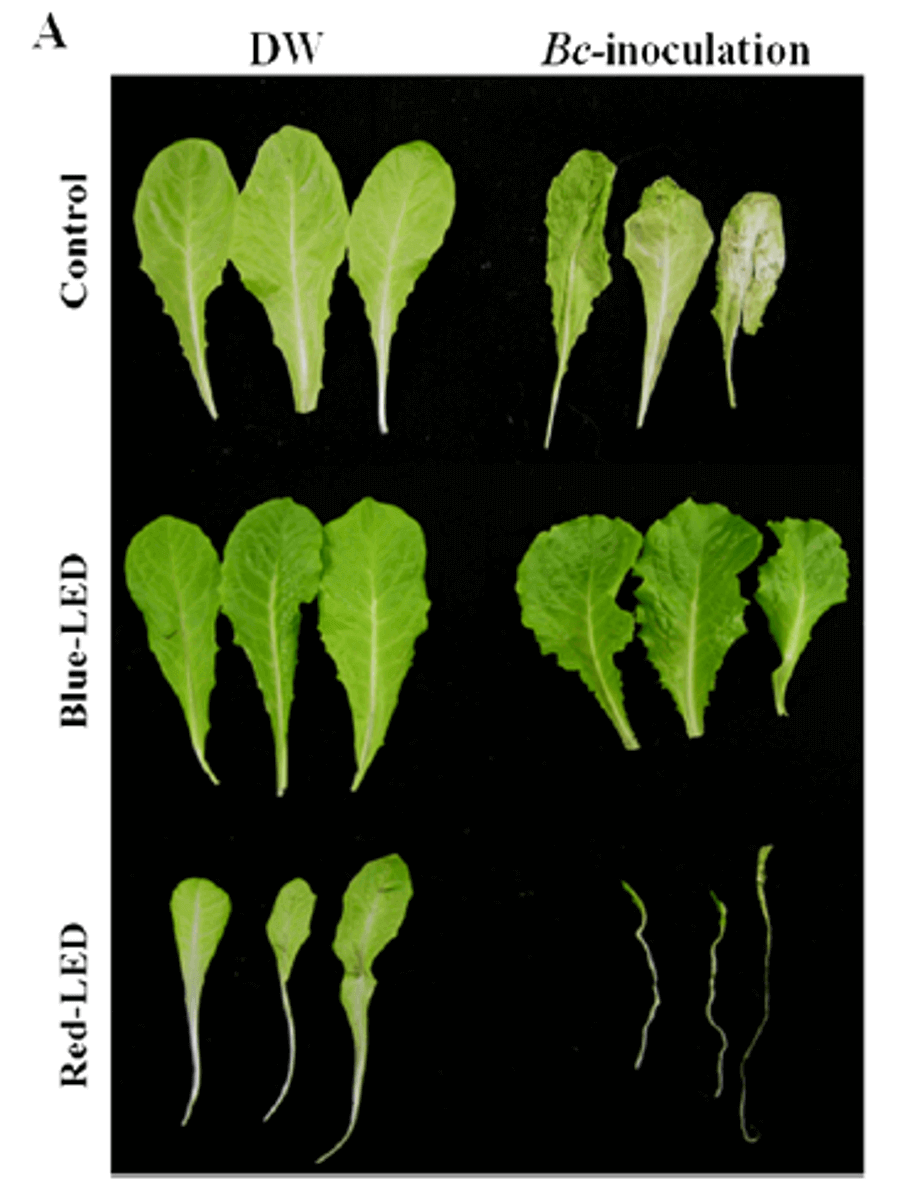
Figure 2: Lettuce leaves exposed to distilled water (DW, left) and Botrytis cinerea fungus (right) according to the light spectrum used. Source: Kook et al., 2010.
Proven efficacy
Whatever the mode of action considered, the efficacy of specific wavelengths has been demonstrated against certain fungi widely present in crops. Against cucumber powdery mildew, Podosphaera xanthii, UV-B and a high R/FR ratio have proved effective. Similarly, to combat the Botrytis cinerea fungus, UV-C and blue light proved effective on tomato and lettuce respectively. Finally, the combination of red and blue wavelengths is effective against the basil mildew, Peronospora belbahrii.
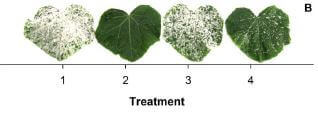
Figure 3: Effects of different light treatments on the development of Podosphaera xanthii powdery mildew on cucumber leaves.
1: natural light + high-pressure sodium (HPS) lamps for 16 h
2: natural light + HPS for 16 h + UV-B
3: natural light + HPS for 16 h + high-pressure mercury lamps (HPM) for 2 h
4: natural light + UV-B + HPM for 2 h.
Source: Suthaparan et al., 2014
Lighting control is an essential parameter for the success of a crop, not only to increase yield and improve quality, but also to prevent and control the development of fungi. Day-to-day lighting management allows us to adapt the light spectrum to the presence of undesirable organisms and prevent them from harming the crop. An adapted light spectrum will ensure the success of a crop, both in terms of productivity and quality, while limiting its environmental impact.


